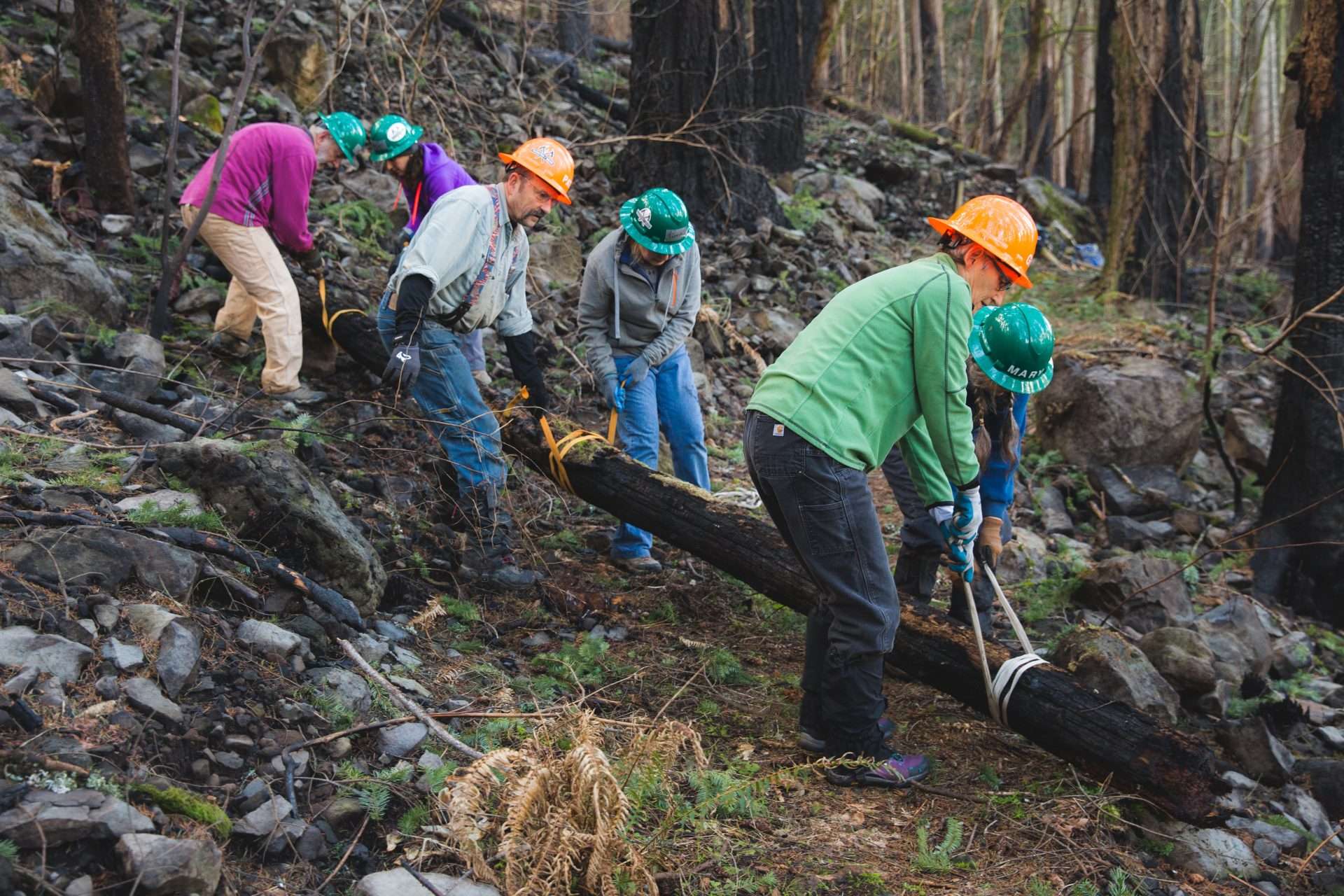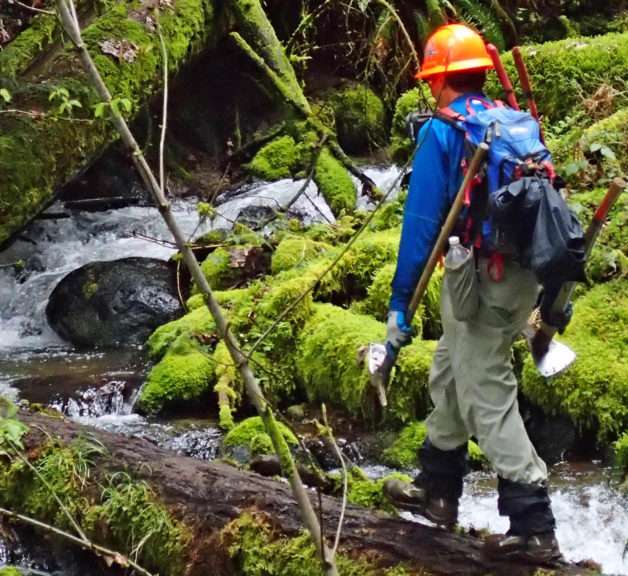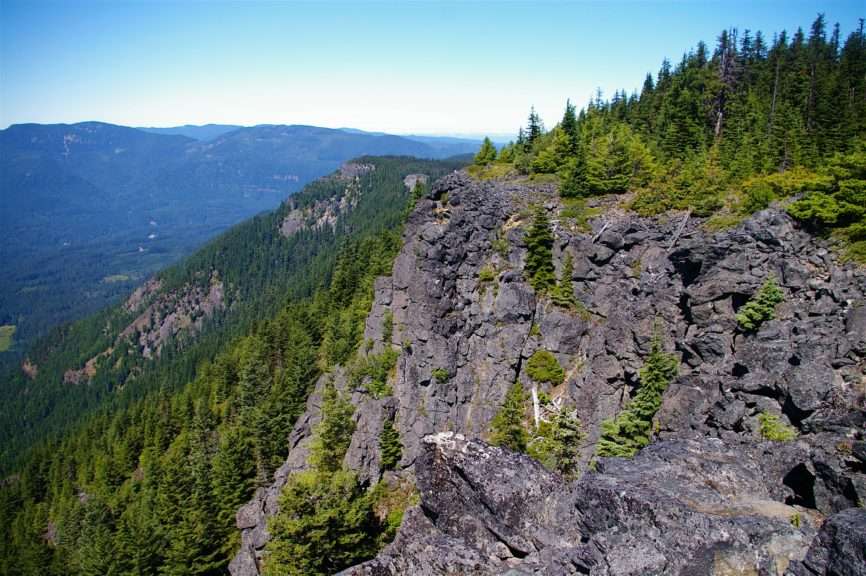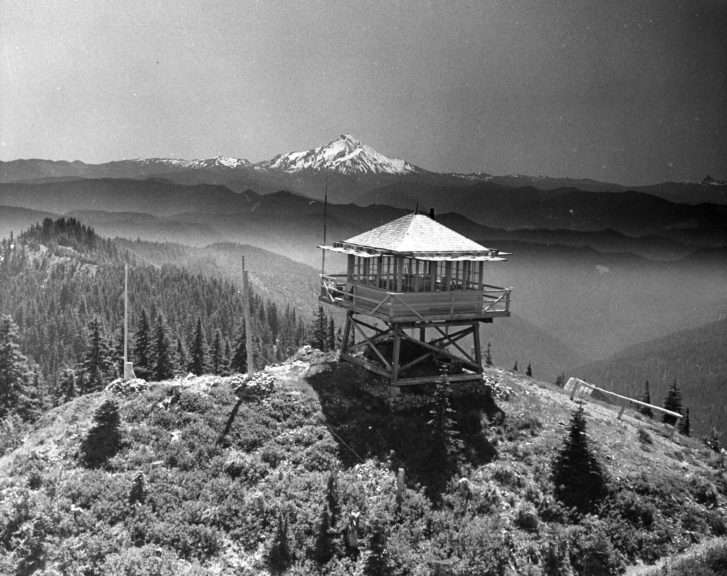By John Sparks, Board Member, Trailkeepers of Oregon
At the Mount Mitchell Viewpoint, you’ll see an abundance of what is arguably the showiest penstemon in our area, the bright pink rock penstemon (Penstemon rupicola). In Oregon, this plant seems to sprout straight out of sheer basalt cliffs throughout the Cascade Range from almost sea level to 4,500 feet (look for it also on the cliffs of Mitchell Point in the Columbia Gorge). Like all other penstemons, the corollas of the rock penstemon are attractively tubular and attract hummingbirds. The Native Plant Society of Oregon lists 46 penstemon species as native to the state. They range in color from white to red and grow in alpine, riverine, and desert habitats, and all are sun-loving. Most of Oregon’s species are some shade of purple or blue, which may make them difficult to identify except through an identification key. This generally involves paying attention to the stamens, calyces, corolla color, and leaf margins.
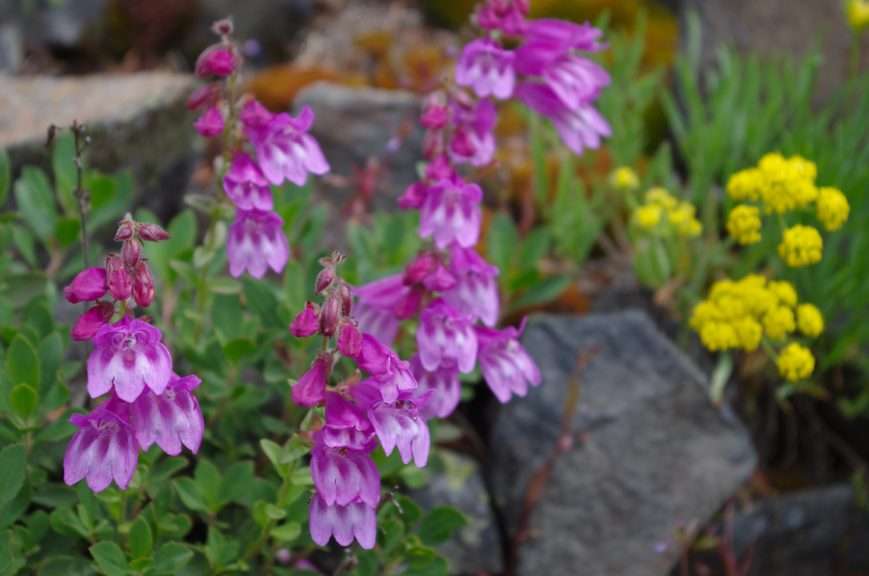
Shrubby penstemon (Penstemon fruticosus), Monte Carlo, Gifford Pinchot National Forest. (Photo by John Sparks)
(more…)
